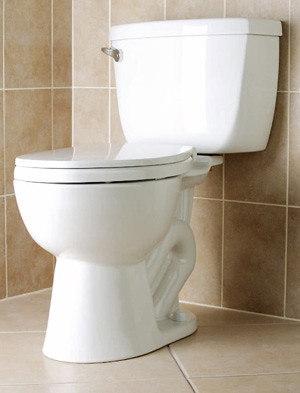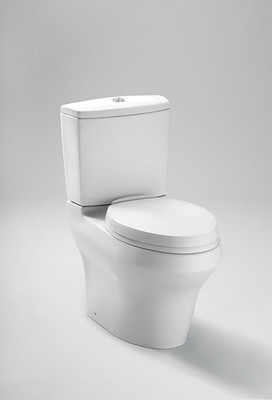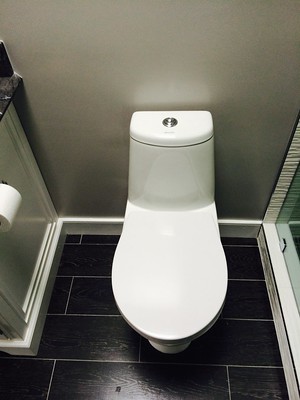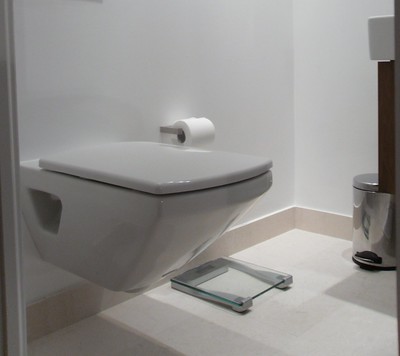Features to Compare When Purchasing a New Toilet
May 09, 2023

Considering installing a new toilet in your Phoenix home? Purchasing a new toilet isn’t actually as simple as it seems.
There are a variety of important factors to consider when selecting a new toilet, like:
- Bowl shape
- Flushing technology
- Efficiency
- Style
- Add ons
Below, we’ll talk a little more about each of these features, so you can get a better idea of what kind of toilet is right for your home.
Need a professional to install your new toilet? We’d be happy to help.
Search by toilet type:
- Gravity-flush toilets
- Pressure-assisted toilets
- Vacuum-assist toilets
- Single-flush toilets
- Dual-flush toilets
- Two-piece toilets
- One-piece toilets
- Wall-mounted toilets
Feature #1: Bowl shape
When it comes to picking out a new toilet, there are two main bowl shapes you’ll need to take into consideration:
- Round bowl $
- Elongated bowl $$
Toilets with a round bowl are usually less expensive than those with elongated bowls and tend to take up less space. However, people usually find toilets with elongated bowls to be more comfortable since there is more surface area to sit on.
Feature #2: Flushing technology
When choosing a toilet, there are three types of flushing systems to consider:
- Gravity-flush toilets $
- Pressure-assisted toilets $$
- Vacuum-assist toilets $$
Gravity-flush toilets are the most common type of toilet and do exactly what their name implies: use gravity to flush waste. When you pull down on your toilet handle, a gravity-flush toilet will open the flushing valve, allowing water into the bowl and flushing out the waste.
Pressure-assisted toilets use air and water pressure to force water into the toilet bowl, flushing the waste. Pressure-assisted toilets are more powerful than gravity-flush toilets and can flush more waste with less water. Because they can flush waste more effectively, they also tend to leave less waste residue in the toilet bowl than gravity-flush toilets.
Vacuum-assist toilets have a vacuum tank that is connected to the trapway (the pipe that carries waste out of your toilet). When you flush your toilet, the vacuum tank creates suction and helps suck the waste out of the toilet and through the trapway. Vacuum-assist toilets are typically more expensive than gravity-flush toilets and around the same price as pressure-assisted toilets. Vacuum-assist toilets are about as effective at removing waste from your toilet as a pressure-assisted toilet is, but they are usually quieter than pressure-assisted toilets.
Feature #2: Efficiency
The more efficient your toilet is, usually the more expensive it will be (but the less expensive your water bill will be on a monthly basis).
Toilet efficiency is measured by how much water a toilet uses per flush (in gallons). The most water a toilet can use per flush (per federal regulations)is 1.6 gallons of water. But, high-efficiency toilets use less than 1.28 gallons of water per flush.
When looking at toilet efficiency, you should look at the type of flushing options the toilet has.
Single flush toilets only have one flush “setting.” Essentially they use the same amount of water for every single flush, which is usually 1.6 gallons if your toilet is not highly efficient.
Dual flush toilets have two flushing options. One option is a light flush and uses a small amount of water, and the other option is a full flush. Over time, a dual flush toilet can save a decent amount of water, which can reduce your water bills.
If you want a high-efficiency toilet, look for a WaterSense label. WaterSense toilets promise to reduce water usage for toilets by 20-60% which is about 13,000 gallons of water per year.
Feature #4: Style
There are three “styles” of toilet:
- Two piece $
- One piece $$
- Wall-mounted $$$

Two-piece toilets are the least expensive of these three options and are the most “basic” kind of toilet. When you install a two-piece toilet, the tank and the bowl are two separate pieces that are bolted together during the installation process.

One-piece toilets are one, solid piece of ceramic. These toilets are more expensive than two-piece toilets, but come with benefits like:
- More aesthetically pleasing- One-piece toilets are usually more sleek and modern looking, which most homeowners prefer.
- Easier to clean- Because a one-piece toilet is one solid piece of ceramic, there’s no space for grime or odor to hide like with a two-piece toilet.
- More leak-proof- With a one-piece toilet, you don’t run the risk of the toilet leaking between the tank and bowl like you do with a two-piece toilet.

Wall-mounted toilets are exactly what they sound like— toilets with no base that are mounted to the wall. These are usually the most expensive style of toilet and are typically made out of one ceramic piece like one-piece toilets.
Feature #5: Add ons
Outside of the core features we’ve listed above, there are a variety of other features you can consider when installing a new toilet, like:
- Adding a bidet
- Adding lights
- Adding a drop seat
- Etc.
Of course, any add-ons will add an additional cost to your toilet installation. If you have a specific add-on that you want, our suggestion would be to talk to the plumber who is going to install your toilet to get an exact estimate and to ensure those extra features will work with your home’s existing plumbing and electrical.
Ready to have your new toilet installed? Contact the best plumbers in Phoenix: Patrick Riley
Know exactly which kind of toilet you want installed in your Phoenix home? We’ve got you covered. Or...still on the fence about which style, flushing technology, efficiency, etc. you want in a toilet? We can help with that too. Our job is to not only expertly install your toilet but to provide you with professional recommendations to ensure you’re getting the right solution for your home and lifestyle.
Originally published: October 9, 2020
Written by: Patrick Riley Cooling, Heating, & Plumbing
Get 10% off (Up to $150)

Ty Lindsay is the Director of Field Operations at Patrick Riley | Isley’s and a 15-year veteran of the plumbing and HVAC trades. In 2010, Ty earned his Journeyman’s plumbing license. He became a Master Plumber five years later and earned his Journeyman HVAC technician’s license that same year. Ty’s breadth of knowledge in plumbing and HVAC includes both residential and commercial work. He’s been a loyal member of the Patrick Riley | Isley’s team since 2016.
- Posted in:
- Buyer's Guide
